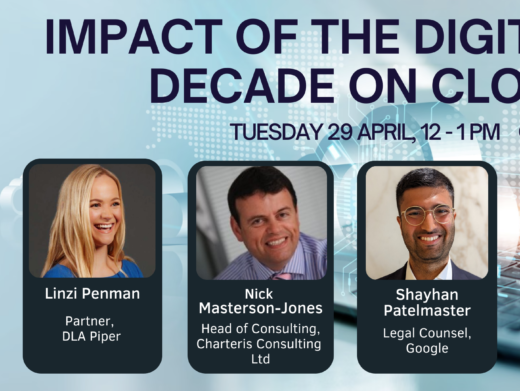Until recently, the legal world has rarely been regarded as a modern, forward-looking place. It is often represented in the media as having more in common with the 19th century than the 21st. Lawyers and judges are rarely associated in the public mind with computers or the Internet. I went into practice as a barrister in 1987 and bought an Amstrad computer. It was the first computer in my chambers and senior members gathered round it, prodding it and asking if it made tea. My colleagues divided into two groups: those who saw it as cheating and those who thought it wouldn’t catch on. I am glad to say that the traditional perceptions of the legal professions and technology are becoming increasingly out of date. For proof of this, I suggest all one would need do is to look around at the range and quality of the exhibits on display here tonight, which are a tribute to the forward-looking and important role the Society for Computers and Law has played for many years. As a result, lawyers will be delivering a better, faster and cheaper service to clients and that is, after all, the goal for us all.
civil.justice 2000
I have been billed this evening to talk about the work of the civil.justice IT Strategy Group. Specifically, I want to talk about a paper the Group produced last year, civil.justice.2000: A Vision of the Civil Justice System in the Information Age, before going on to talk about our immediate plans for the modernisation of the civil courts.
You might recall that in 1998 we published a consultation paper, civil.justice: Resolving and Avoiding Disputes in the Information Age. That document was a first attempt to take a long-term look ahead at the civil justice system. We discussed how the Internet and developments in IT might allow us to enhance and reform the civil justice system with a primary focus on the interests of citizens.
The paper attracted a considerable amount of comment and interest. We received a wide range of responses, including one from SCL, for which we were very grateful. Although the overwhelming reaction to the paper was positive, what pleased me most was that all the respondents, regardless of the view they took of some of the ideas we put forward, welcomed the fact that the Lord Chancellor’s Department was starting this debate and was attempting to take a long-term view of the use of IT in support of the civil justice system.
civil.justice.2000 takes account of those responses and other important developments which have taken place since the consultation paper was published. It charts how we can see the civil justice system responding to the challenges of new technology over the coming decade. It looks at ways we can use IT to improve the way civil justice is delivered today and to respond to the possibilities IT gives us for working in different ways in the future. It is about, if I can adopt the words of Richard Susskind (a member of the civil.justice committee), automation and innovation.
The paper is not a detailed plan for the next 5 to 15 years. That would be an impossible undertaking given the speed of technological change. Instead we set out a strategy at the highest level, to plot an overall direction for the years ahead.
Our current view of the civil justice system is litigation and court based. However, we believe that we need much more than an effective court system in the future. What is needed is an integrated civil justice system wherein the courts are a forum of last resort and increased awareness of legal rights and responsibilities is encouraged as part of lifelong learning.
civil.justice.2000 and the ongoing work of the Strategy Group clearly shows that technology has a key role in delivering this vision. It is my hope that setting out this vision and the programmes which are contributing to it will enable those outside Government who work in or with the civil justice system to plan how they should direct their business strategies to meet the challenge of the future.
Modernising the Civil Courts
One of the key initiatives outlined in civil.justice.2000 is the Court Service’s Modernising the Civil Courts (MCC) programme. A week ago, I was delighted to launch our consultation paper on this subject, which gives more detail than would have been possible in civil.justice.2000, of our proposals to improve the range and quality of services for customers of the civil courts in the 21st century.
As I have said, one of the key messages from civil.justice.2000 is that modernisation of the courts is not enough by itself. But where it is appropriate to use the courts, we suggest in the MCC consultation paper that the challenge is to improve the choice to the customer, and to ensure that costs are proportionate and not a barrier to access.
The paper recognises that the themes of Modernising Government are central, focusing on what customers want, using technology to enable change – especially enabling us to deliver services in entirely new ways. Equally importantly, the paper addresses significant wider issues which arise whenever we are dealing with IT issues in civil justice – privacy, security, access to justice, recognising the risks of exclusion and proportionality of cost.
As well as being an enabler of change, technology is also a creator of demand for change – it forces us to challenge our assumptions about the way in which courts deliver services. We need to recognise that technology presents a challenge in respect of cost to the customer. The costs of using the courts cannot remain high simply because the courts and the law fail to recognise and exploit new technology. The MCC paper suggests that we should meet this challenge in a number of ways:
we should reduce administrative costs, by using technology to widen customer choice and maintain traditional services
we should use technology/advisor partnerships to increase the number of access points to the services of the court
we should balance the reduced administrative costs with better deployment of resources towards the needs of those otherwise excluded
we must develop a coherent strategy for the provision of local services, including re-evaluation of our current geographical network of courts.
The scenarios in the paper draw attention to particular applications for new technology, such as:
‘Gateway partnerships’ that enable customers to access court services through intermediaries, such as advice agencies (eg if someone wishes to challenge a deduction from earnings why should they not be able to issue the application from the CAB, why do we insist on a paper based system?).
‘Customer partnerships’ allowing regular customers, such as housing authorities, to conduct business electronically with the court. 57% of county court claims are issued through the bulk issue centre in Northampton. The organisations using that facility are not able to link electronically with the issue centre at the moment and that change is essential.
Internet technology to provide round-the-clock access to service for business and the citizen.
The use of video and telephone technology to reduce the need for attendance.
Advice and information available round the clock via Web sites and kiosks.
We have already started to make use of pilots to show how technology might be used to deliver such services electronically.
After a feasibility study last year, a project has now begun to develop Internet services which will enable online issue and progression of straightforward money claims in the county court. We already have a working prototype which was developed to demonstrate the potential for such a service and we hope to implement at least the first phase in the next financial year.
Secondly, from 5 February this year, practitioners at the Preston County Court will be able to participate in a scheme, called PREMA, that will enable them to file electronic applications at court. The judge will then have the option of dealing with the application electronically without the need for the parties to attend.
We also have the continued development of the Community Legal Service’s JustAsk Web site which is providing legal information to about 1,000 customers a day. The site is not only winning awards but is providing practical assistance to an increasing number of people.
Aspirations
These are of course, comparatively early days. But I hope you will agree from what I have said that we are serious about our determination to meet the challenge of the information age. I just wish to reiterate that the Lord Chancellor’s Department has secured £43 million from the Treasury to invest over the next three years in the Modernising Civil Courts Programme.
There are some sound reasons for the persistence of tradition in the courts. The Law is a bedrock and change must preserve its important elements; integrity, rights, impartiality and accessibility. Whilst never forgetting that, I believe that the civil justice system can be a prime example of the sort of radical change demanded by the Modernising Justice programme. The Government is determined that it should be.




